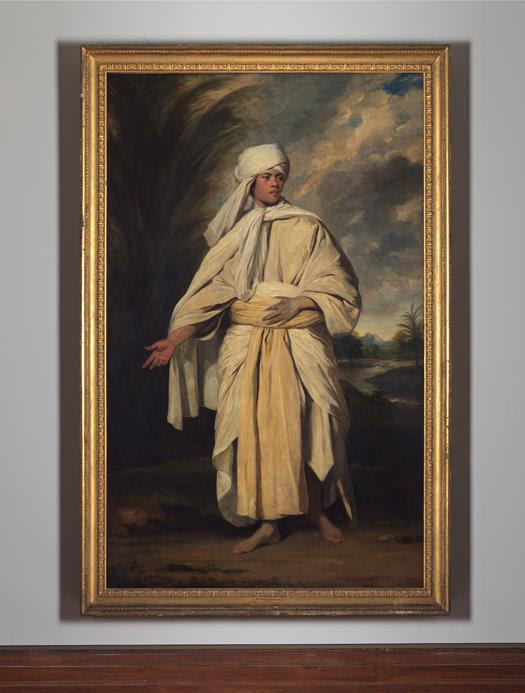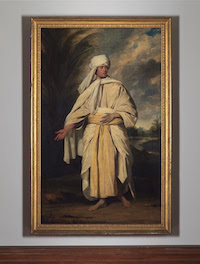
LONDON and LOS ANGELES – The National Portrait Gallery in London and the Getty Museum in Los Angeles announced plans on March 31 to jointly acquire and share ownership of Sir Joshua Reynolds’ masterpiece, Portrait of Mai (Omai), in a new model of international collaboration that will maximize public access to this important work.
The announcement follows long-term discussion and planning by the partners, who intend to share the work for public exhibition, research and conservation care. The London National Portrait Gallery and the Getty Museum intend to enter a joint ownership agreement, and in both locations, the public will be able to view the work free of charge.
Nearly eight feet high, Reynolds’ spectacular image of Mai holds a pivotal place in global art history, depicting the first Polynesian to visit Britain, and is widely regarded as the finest portrait by one of Britain’s greatest artists. Known as Omai in England, Mai (circa 1753-1780) was a native of Raiatea, an island now part of French Polynesia. He traveled from Tahiti to England with Captain James Cook and spent the years 1774-76 in London, where he was received by royalty and the intellectual elite, and indeed became something of a celebrity. Mai returned to his homeland in 1777 and died there two years later.
If the National Portrait Gallery is successful in the final phase of its fundraising campaign, the painting will first be exhibited at the gallery, which will reopen following its recent transformation in June. Mai will travel periodically between the two countries, sharing time equally between them, including being displayed in the Getty Museum when Los Angeles hosts the 2028 Olympic Games.
This collaboration follows previous joint initiatives of the NPG and Getty, including the publication of the National Portrait Gallery’s Later Victorian Portraits Catalogue, which began in 2003, and a current project on the gallery’s Lucian Freud Archive, both funded by the Getty Foundation.
Each partner will contribute half of the £50 million (about $61.6 million) in funds needed to acquire the painting. The NPG has raised the majority of its portion of the funding, including a significant £10 million pledge by the National Heritage Memorial Fund, an Art Fund grant of £2.5 million – the largest in its history – and many donations from generous trusts, foundations and individuals. This leaves just under £1 million remaining, and the National Portrait Gallery is continuing to fundraise.
The partnership has the support of the Department for Culture, Media and Sport, Arts Council England, the National Heritage Memorial Fund and the Art Fund, which have all welcomed this innovative approach.
About Joshua Reynolds’ Portrait of Mai (Omai)
Reynolds painted Mai while at the height of his creative powers, exhibiting the portrait at the Royal Academy of Arts in London in 1776. He portrayed his imposing subject barefoot before a tropical landscape, dressed in flowing robes, including a traditional tapa (bark-cloth) sash and a headdress (Mai is known to have dressed in British clothes while in London). His pose and hand gestures were probably inspired by the Apollo Belvedere, then one of the most admired antique sculptures, celebrated by Winckelmann in 1755 as the classical epitome of “noble simplicity and quiet grandeur.”
While Mai’s face affects a distant, heroic gaze and bears the hallmarks of idealization, there is an unmistakable individuality in his strong facial features and tattooed hands.
Reynolds, who apparently painted Mai’s portrait for personal reasons, kept the picture in his London studio until his death in 1792. It was shortly after acquired by Frederick Howard, 5th Earl of Carlisle, who installed it in his country estate, Castle Howard, in Yorkshire, England. The painting remained there until 2001, when it was acquired at auction by a private collector, who has now offered it for sale.


